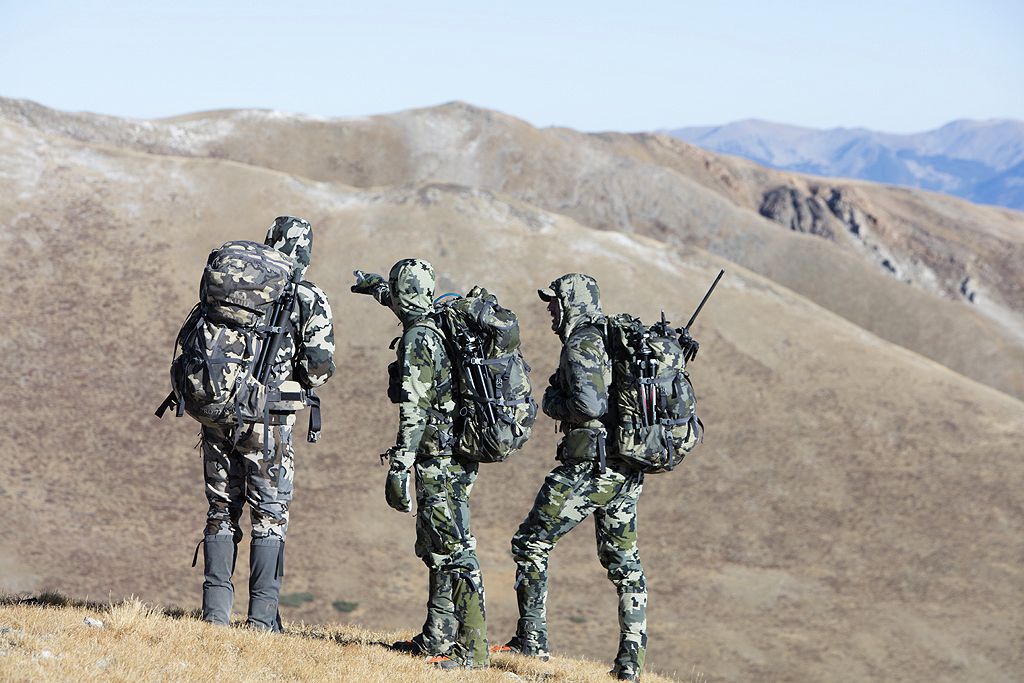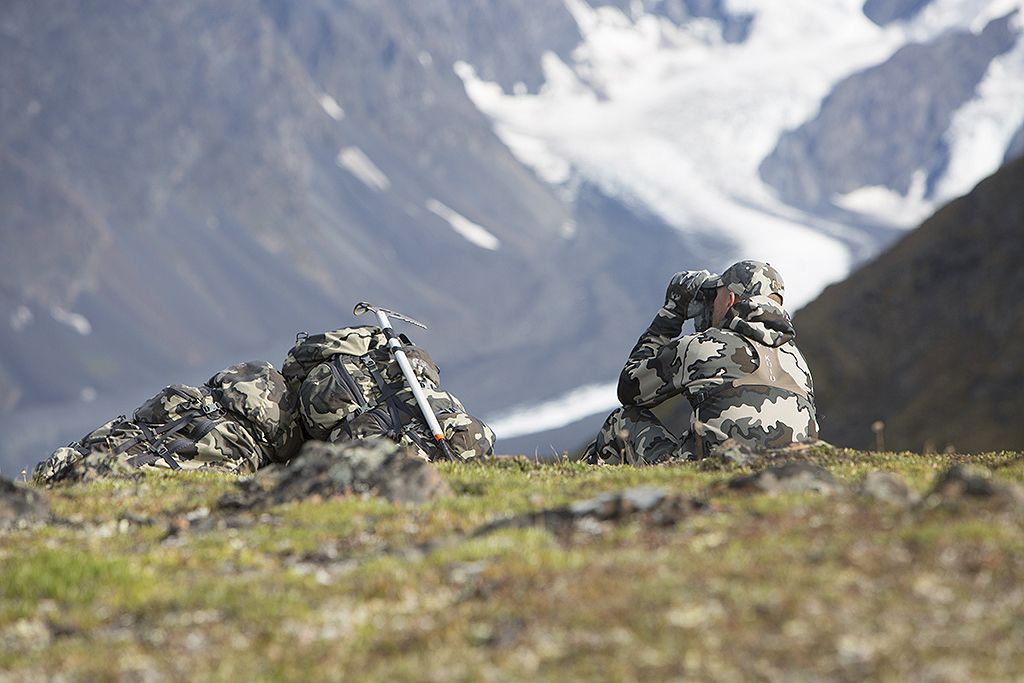More and more people are taking to the backcountry each year, expanding the distance, duration, and efforts of their adventures. Over the past ten years, the once quiet style of Backpack Hunting has become an industry of its own with a growing selection of dedicated clothing, gear, organizations, and social media outlets. The backpack market in particular has responded well with a wide selection of quality hunting-specific packs to cover a range of uses and preferences. Gone are the days of making do with packs designed for our backpacking (minus the hunting) counterparts.
While this relatively new boom in hunting pack offerings is a huge win for anyone looking to outfit themselves in one, the variety of styles, features, sizes and componentry can be difficult to decide between. Furthermore, once a pack has been selected and purchased, it’s important to understand the various fitting techniques and adjustments that most upper-end packs come standard with.
PACK SELECTION - SIZE
The first thing most pack shoppers tend to get hung up on is size. As a general rule of thumb, it’s better to err on the large size - especially in packs that have the ability to compress down evenly by using external straps. Typically the weight difference between same-model packs within a couple thousand cubic inches is minimal, since the additional size mainly consists of extra fabric (as opposed to extra fabric plus webbing, hardware, and zippers). In short, bag size selection is not the place to cut weight.
The average amount of gear carried and average time of year used should be the top two factors in size selection, with average duration of use playing third fiddle. Often times conversation or advertising around pack size puts a large emphasis on number of days; but aside from food, gear volume for a 2-3 day outing isn’t drastically different than a 7-10 day trip. Referring back to time of year, users who plan to live out of their pack in cold weather should consider the additional volume required for more and warmer clothing. Figure about an extra 500-750 cubic inches for cold weather clothing volume compared to what one would pack for warmer trips.
MODULARITY AND BAG FEATURES
Features and modularity is where today’s high-end hunting packs differentiate themselves from one another the most, offering shoppers a great variety of well executed design options to choose between.
Modularity, or the ability to conveniently switch between multiple bags on the same frame and suspension platform, has become a huge selling point for many pack companies - and for good reason. With a modular pack system, the user can purchase multiple bag sizes and styles to cover a range of uses, often at a price well below what it would cost to own specialized packs individually. Furthermore, the companies offering these modular systems do a great job of keeping yearly bag updates compatible with previous model frame and suspension kits. As a result, owners of these systems can make upgrades as necessary at a fraction of the cost of buying a new pack. Furthermore, modular packs tend to hold their resale value better than the all-in-one options. With all of this said, it would be unfair to say that modular systems are always better than all-in-one packs, as there are some very highly regarded standalone packs on the market which provide excellent versatility and/or specific use functions.
When it comes to the bags themselves, there are essentially two camps on overall feature richness - both of which are offered by most of the big name pack companies. First, there are the bags that are designed to hit weight goals for the ultralight conscious, which do so by providing fewer internal and external pockets, zippers, and built-in accessories. On the other end of the spectrum is the full-feature design style, in which bags are built with ample pocketing, a variety of access points, and often have specific-use portions incorporated such as rifle sleeves and dedicated hydration storage. Which route to take is entirely personal preference, yet it’s important for buyers to keep an open mind and consider all of the above, evaluating any pros and cons based on their own experiences in the field.

FRAME AND SUSPENSION DESIGN
Even more important than the features and style of the bag portion is a pack’s frame and suspension system, and the way they work together. After all, we spend a lot more time carrying our packs than we do loading and unloading them. No matter how well a bag organizes, holds, and protects one’s gear, it’s still only as good as its ability to be carried comfortably.
Carrying comfort under a range of load weights is a direct result of four key components: structure and adjustability in the waist belt and shoulder straps, frame rigidity and its ability to “lift” a load, how well the pack fits its user, and the weight distribution of contents inside the bag. Fit will be covered later, but first it’s important to understand the relationship between frame and suspension, and why some designs on the market perform better than others.
We see a variety of rigid materials used in today’s pack frames, ranging from high-density plastic, to aluminum, to composite-wood laminates, to carbon fiber. Some are built to provide a slight amount of flex with the body, while other frames remain 100% rigid - even under heavy loads. A completely rigid frame isn’t necessarily any less comfortable than a slightly flexible frame, and a frame with some flex doesn’t necessarily have a harder time handling a heavy load than a rigid one. Overall comfort and performance has more to do with the suspension than frame stiffness - which happens to be yet another one of those personal preference areas.
Starting at the top of a frame and suspension are the load lifters - or lack thereof. Pack shoppers should always be on the lookout as to whether or not a pack has functional load lifters. This feature requires the top of the frame (the ‘stays’) to end above the shoulders so that it can interact with the shoulder straps in a way that by tightening or loosening, the amount of weight borne by the shoulders is manually increased or decreased. As a load lifter is tightened, the weight of the pack ‘lifts’ off the shoulders, transferring more weight onto the hips. Loosening the load lifters sets more weight back onto the shoulders and relieves weight from the hips. Furthermore, load lifters can be adjusted independently on the left or right sides to balance the feel of a lopsided load that might be heavier on one side than the other. Functional load lifters also play a key role in the initial fitting of a pack (see Pack Fitting section).
The structure, shape, and makeup of the actual shoulder straps and waist belt varies, even between different pack models produced by the same company - usually a result of various models being designed for different intended duration and load bearing uses. To really pick apart the differences between manufacturers’ suspension and why they make them the way they do, one would best inquire with the company directly. But for starters, a few notable qualities to look for in the shoulder straps and waist belt include width and padding thickness, anatomical contour, stretch-limiting build, breathable against-the-body fabric, and torso length adjustability.
FABRIC TYPE
Most critical to a pack’s durability and longevity is its fabric and components. Most commonly found as the main material in quality hunting-specific packs is rip-stop nylon (commonly known as Cordura, even if it’s not actually Cordura brand) with a denier count between 330 and 500, with 500D being the most popular balance between weight and durability. For comparison, most backpacking-specific (non-hunting) packs on the market are built with nylon in the 200 denier ballpark, with some features like exterior pockets often using less durable stretch polyester. By adding coatings of Polyurethane (PU) or Polypropylene (PP) to the inside of the rip-stop nylon, pack companies can significantly increase the water-resistance of their product. Each company varies in the number and type of coatings, which may be worth pre-purchase investigation by buyers who intend to use their pack in consistently wet conditions. Four layers of PU or three layers of PP does a sufficient job at keeping moisture from penetrating through the fabric with ease.

PACK FITTING
Just as important as anything covered up to this point is how well a pack actually fits the user. Achieving a quality fit is a simple process assuming the user’s fit specifications fall within the adjustment range of the chosen pack. Pack fitting starts with setting the torso length (on packs that allow this adjustment) and making sure that the frame length is not too long or too short. If a frame is too short, the effectiveness of the load lifters will likely be compromised. Load lifter performance can also be compromised with a frame too long, in addition to the potential nuisance issue of having the top of the pack land up against the back of the head.
Properly adjusting the torso length is simply a matter of trial and error until three main outcomes are achieved:
- The top of the hip bones sit comfortably behind the half-way-up point of the waist belt, and the lumbar pad is firmly planted in the small of the back above the tail bone.
- The shoulder straps, with load lifters loose or barely tensioned, make constant contact with the back and shoulders.
- When the load lifters are tightened, the shoulder straps lift up, creating slightly open space off the top of the shoulders.
Moving the shoulder strap-frame contact point(s) upward or downward allows the user to finely fit the pack to his torso length.
One should always begin the fitting process with 15-25 lbs of weight securely centered in the pack bag. This will keep the pack from sliding up on the hips when the belt in tightened, which can lead to ambiguous adjustments. The load lifters and shoulder straps should be loose at the onset of the fitting. Standing in front of a mirror, the user should put the pack on and tighten the waist belt in the correct position mentioned above.
Solidifying the waist belt position is the basis for all further adjustments, as the optimal waist belt location is always constant. Once the waist belt is in place and cinched tight, the shoulder straps get tightened to take up all slack, but not tight enough to lift the waist belt out of its position. The load lifter straps should still be loose. At this point, by looking at the side profile in a mirror, the wearer will be able to tell whether the torso adjustment needs to get shorter, longer, or stay put.
WHAT’S NEXT?
After enduring the ins and outs of the pack selection and fitting, a new pack owner will be left with as many or few remaining tasks as they see fit. From trial and error with packing and weight distribution, to cleaning and maintenance, to adding accessories, there’s a nearly endless amount of tinkering one can do throughout the ownership of a quality pack, if the user so desires. Most importantly, we need to enjoy our time outdoors and be thankful for the great gear choices we have available today. Thanks for reading and best of luck to all!
